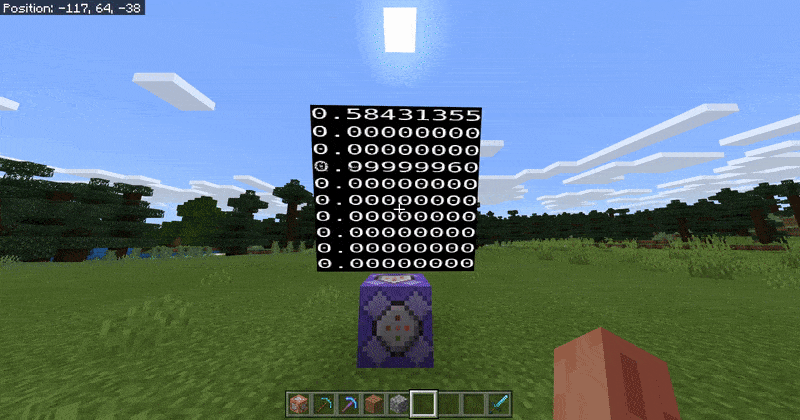Shaders
WARNING
The shaders on this page are incompatible with Render Dragon. That means that they will not work on Windows and Console devices past 1.16.200, nor other devices past 1.18.30!
Overview
Shaders are divided into 2 folders: glsl and hlsl. For shaders to work on every device, you need to code shaders in both languages. For testing on Windows, hlsl is enough. When rewriting shaders from one language to another, there are few things to change, like HLSL float3 is vec3 in GLSL. Mapping between those languages can be found here
Materials
Vertex, fragments, and sometimes geometry shaders are combined with some options as materials and are required for custom shaders. To create new material, you need to create a file, which matches the name of the .material file in the vanilla resource pack. For example: materials/particles.material. Materials support inheritance by adding parent material after a colon. For example: entity_alpha:entity_base
Common material definition fields
| Field name | Description | Example value | Notes |
|---|---|---|---|
vertexShader | Path to the shader relative to hlsl/glsl folder | For HLSL shader, .hlsl suffix is added. | |
fragmentShader | Path to the shader relative to hlsl/glsl folder | For HLSL shader, .hlsl suffix is added. | |
vertexFields | An array of fields passed to vertex shader | It's better to copy this field from vanilla material. | |
variants | An array of objects, which define variants of the material | It's better to copy this field from vanilla material. | |
+defines | An array of #define directives to add to the shader source | Useful for reusing shader, but changing some minor setting. | |
+states | An array of states to enable | ["Blending", "DisableAlphaWrite", "DisableDepthWrite"] | For OpenGL implementation, this is equivalent to glEnable call. |
-defines | An array of #defines directives to remove from inherited +defines | ||
+samplerStates | An array of objects, defining how texture at certain index is treated | { "samplerIndex": 0, "textureFilter": "Point" } | textureFilter specifies how to sample the texture and textureWrap specifies the behavior, when accessing outside of the texture dimensions. |
msaaSupport | Multisample anti-aliasing support | Both | |
blendSrc | Specifies how the color source blending factors are computed | One | For OpenGL implementation, this is equivalent to glBlendFunc call. |
blendDst | Specifies how the color destination blending factors are computed | One | For OpenGL implementation, this is equivalent to glBlendFunc call. |
Example:
{
"materials": {
"version": "1.0.0",
"particle_debug": {
"vertexShader": "shaders/particle_generic.vertex",
"fragmentShader": "shaders/particle_debug.fragment",
"vertexFields": [{ "field": "Position" }, { "field": "Color" }, { "field": "UV0" }],
"+samplerStates": [
{
"samplerIndex": 0,
"textureFilter": "Point"
}
],
"msaaSupport": "Both"
}
}
}For all the details about material files and possible field values, check material file JSON schema.
Troubleshooting
Shader doesn’t change
Every time there is a change in the shader, you need to restart Minecraft to recompile the shader completely.
Compilation error
When there is a shader compilation error, a line number is usually specified where the error occurred. You need to check a few lines above the one set in error because Minecraft adds #define directives before compilation.
Couldn’t find constant buffer named: $Globals
I couldn’t accurately find the actual cause of this error, but it seems to be somehow connected to global variables. Removing them (initializing them in the main function or changing them to #define directives) seems to fix the problem.
Tips and tricks
Passing variables to the shader
You can pass variables to the shader from a particle or an entity by changing entity color. Input color is clamped to <0.0, 1.0>. To pass more significant values, you need to divide by max value (or at least some considerable number).
Using time in shader
TIME variable is a number of seconds as float and is global for all shaders. For time-based on particle lifetime, you need to pass this:
"minecraft:particle_appearance_tinting": {
"color": ["variable.particle_age/variable.particle_lifetime", 0, 0, 1]
}Then in the shader, use PSInput.color.r as time, where 0.0 is particle birth and 1.0 is particle death.
Camera direction towards the entity
For entity shaders, you can make the shader dependent on the camera direction towards the entity.
- Add to
PS_Inputin vertex and fragment shader new field
float3 viewDir: POSITION;- After that, add to vertex shader this line
PSInput.viewDir = normalize((mul(WORLD, mul(BONES[VSInput.boneId], float4(VSInput.position, 1)))).xyz);- In the fragment shader, use
PSInput.viewDirto make changes depending on camera rotation
Debugging values
The easiest way to debug a value is to turn it into color and render it like this.
PSOutput.color = float4(PSInput.uv, 0., 1.);This should create a red-green gradient, showing that the values of uv are between <0, 0> and <1, 1>.
You can use the debug shader I wrote based on this shader. Right now, this shader will display values of the color passed to the shader. To display another value, change line 70 in hlsl shader to
int ascii = getFloatCharacter( cellIndex, <float4 vector here> );GLSL version of debugging shader may crash Minecraft, use only for debugging.




